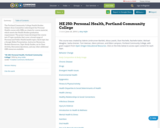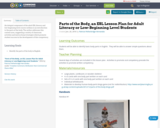
This resource has been updated. Please visit https://oercommons.org/courseware/lesson/110249 for the current version.
- Subject:
- Applied Science
- Life Science
- Social Science
- Material Type:
- Full Course
- Date Added:
- 06/15/2016

This resource has been updated. Please visit https://oercommons.org/courseware/lesson/110249 for the current version.

These resources are for enabling children to think critically about health claims and make well-informed choices. They include a combined comic and text book, an exercise book, and a teachers' guide. The resources have been tested in an experiment with over 10,000 children, which showed they improve children's ability to assess health claims. They have been translated to 12 languages.
The comic book is also available as a set of videos with professional audio narration.

According to a 2012 study, 81% of U.S. teenagers reported looking at online health information for their needs (Park & Kwon, 2018). For this reason, it is increasingly important to consider ways to promote and model effective digital health literacy. This module is designed not to dissuade adolescents from using digital resources to find health information, but rather equipping them with the tools to find reputable resources and responsibly use them to inform conversations with their health providers. This learning module is divided into three sub-modules (each 20-30 min in length) that are designed to be taught in separate sessions, or as part of a singular digital health literacy workshop/bootcamp. Please feel free to use any parts of this module that you feel could best empower your students to actively engage in their health and wellness.

An integral component of the adult ESL literacy and low-beginning level course outlines is an introduction to the parts of the body. The author addresses this content area, suggesting a variety of classroom activities and instructional strategies which promote student success in the development of this competency